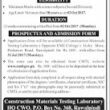The global village of the construction industry has been burgeoning around the most widely used construction material that is concrete. Concrete itself utterly depends on the properties of its constituents which therefore are intensely imperative to understand.
Fine aggregates, one of the principal constituents of concrete, are generally natural sand or crushed stone particles that pass through 4.75mm sieve (Sieve#4).
In this article, we will be fostering a prime specification of fine aggregates that is “Grading Requirements”
If you want an immediate solution for all your aggregate crushing requirements. Here is my finding with JXSC sand maker.
What is grading
The grading also known as sieve analysis is simply an exploration of particle size distribution and represented as % passing from each sieve.
Therefore, to examine the grading of fine aggregates, the common procedure of sieve analysis shall be adopted by using the set of sieves as mentioned in the section of grading requirements table.
Significance of Grading
The particle size of fine aggregates (sand) substantially governs the properties of concrete mix such as workability, pumping, placing, bond development and integrity of the resulted mass which are of prime importance while dealing with concrete.
Therefore, it is fundamental for every Civil Engineer to ably comprehend the basic grading requirements of fine aggregates which otherwise may ruffle various properties of concrete composition.
Grading Requirements Table [Reference: ASTM C33]
American Society for Testing and Materials (ASTM) an international standards organization, in ASTM C33, specifies the percent passing limits for each sieve of fine aggregates.
Those specified limits are listed in the table given below:
Like Us on Facebook!
Subscribe Us on YouTube!
| Sr.No |
Sieve # |
Sieve Size |
Percent Passing |
| 01 | 3/8 in | 9.5mm | 100 |
| 02 | No.4 | 4.75mm | 95-100 |
| 03 | No.8 | 2.36mm | 80-100 |
| 04 | No.16 | 1.18mm | 50-85 |
| 05 | No.30 | 600µm | 25-60 |
| 06 | No.50 | 300µm | 5-30 |
| 07 | No.100 | 150µm | 0-10 |
| 08 | No.200 | 75µm | 0-3 |
These specified limits are stated in Table-1 of ASTM C33.
Other Key Parameters
- It is preferable to have fine aggregates withe % passing in the average middle zone of %passing limit rather to be on the extreme ends.
- The fineness Modulus of fine aggregates shall be in the range of 2.3~3.1.
- The fine aggregates shall have not more than 45% passing any sieve and retained on the next consecutive sieve of those shown in the aforementioned table.
- Concrete with fine aggregate grading near the minimums for percent passing the Sieve No.50 and Sieve No.100 sometimes have difficulties with workability, pumping or excessive bleeding. The addition of entrained air, additional cement, or the addition of an approved mineral admixture to supply the deficient fines, is methods used to alleviate such difficulties.
About the Author:
Umair Ashraf is a professional Civil Engineer who has been working with a globally renowned organization on various construction projects of international recognition for the last four years. Enriched with this vast experience in Civil Engineering and having eloquent writing skills, he is going to facilitate the learners in their technical skills development through his articles based on international standards.












